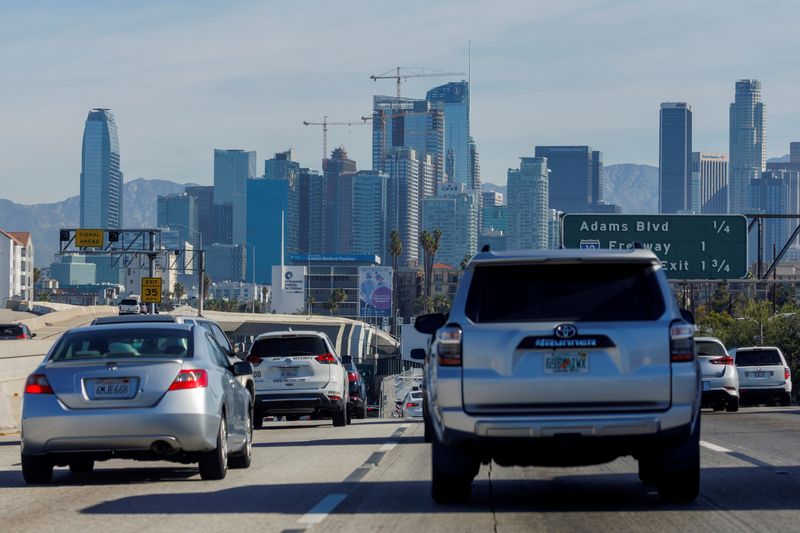‘Remarkable’ surge in auto insurance costs fans US inflation By Reuters


© Reuters. FILE PHOTO: Traffic moves along a freeway as vehicles travel towards Los Angeles, California, U.S., March 22, 2022. REUTERS/Mike Blake/File Photo
(Reuters) – Even as U.S. inflation has eased in the last year, an unusual culprit has emerged in recent months as a surprise force in preventing consumer prices from falling even further: auto insurance.
Consumer prices in December overall rose 3.4% from a year earlier, the Labor Department said on Thursday in the release of the monthly Consumer Price Index, more than the 3.2% economists polled by Reuters had expected and up from 3.1% in November.
Several familiar categories accounted for much of the overshoot, with stubbornly high shelter costs in particular accounting for close to two-thirds of the increase. But the highest annual increase for car insurance in nearly half a century made a notable upward contribution that may not be fading soon.
“The behavior of the MVI (motor vehicle insurance) component of the CPI has truly been remarkable, and I don’t see any evidence of near-term relief,” Tom Simons, U.S. economist at Jefferies, said in an email.
Motor vehicle insurance premiums skyrocketed by 20.3% in December from a year earlier, the largest increase since the mid-1970s, the government data showed.
Premiums have risen persistently all year on a monthly basis, too, climbing 1.5% last month. That is roughly on par with the average monthly increase over the last year, a rate that exceeds all monthly increases prior to the pandemic.
What’s more, auto insurance – an expense category that has rarely registered as a hefty influence in overall inflation – accounted for 15% of headline price increases over the final quarter of 2023.
‘STICKY STUFF’
Simons said several factors are adding to the rising premiums, such as increasing costs for the labor and parts to repair damaged vehicles, and the overall rise in vehicle prices over the last several years, which lifts the underlying collateral being insured. Declining demand from reinsurers is also a factor, he said, and “natural disaster risk is probably contributing on the margin.”
Auto insurance is typically regulated on a state-by-state basis, and costs are subject to major regional differences.
“We may have some authorities there as well but those sit with independent agencies,” White House National Economic Council Director Lael Brainard said when asked about the outsized jump in insurance costs. There is also a “call to big business to bring down those prices that they increased so much when supply chains were snarled.”
All of the U.S. government’s independent agencies have “a real focus on tackling unfair and deceptive price practices,” Brainard said.
Still unclear is the degree to which insurance costs alone can impede further progress on inflation and disrupt the outlook for Federal Reserve interest rate cuts later this year.
“It’s hard for me to see how this might increase so much more from here that it would have an influence on monetary policy,” Simons said. “I don’t think we’re looking at another 10-20% increase from here for the next 12 months, but again, I’m no expert on insurance.”
“This is a great example of the ‘sticky stuff’ in the inflation data … prices for services that are largely non-discretionary and have no substitute.”
Source link



